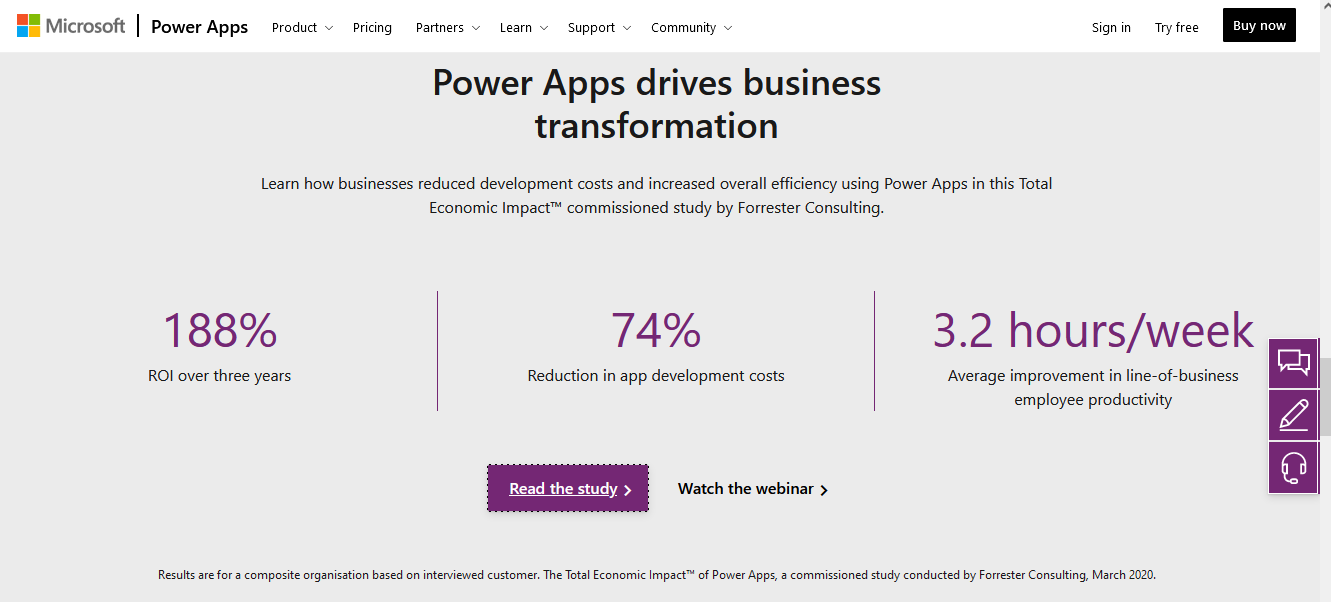What cost savings can corporate organisations achieve with Power Apps and the Power Platform?

Where to find these studies
We can find many of these studies by carrying out an online search on the term "Total Economic Impact of Microsoft". Here are some of the search results.What do the studies tell us?
All the studies attempt to quantify the financial benefit of adopting specific technologies, and they produce compelling headline figures. The figures from the March 2020 "The Total Economic Impact of Power Apps" study (which features on the Power Apps website), boasts a 188% ROI over 3 years, and a 74% reduction in development costs.
Interestingly, the studies state a higher ROI when organisations implement solutions based on the wider Power Platform, as cited in the February 2021 study on the "Total Economic Impact of the Power Platform". This study reports:
- Return on Investment (ROI) of 502%
- Net present value (NPV) $25.92
- Application development cost reduction 48%
How are these figures derived?
These headline figures are impressive, but how are they derived?
The Power Apps study was based on interviews with 6 customers and a survey of 53 other companies. Prior to Power Apps, these companies used only "high-code" developers.
Using this data, Forrester derived a composite company with 2000 employees and 33 development projects. Therefore, the headline figures will be more accurate for organisations that match the size of this composite company.
The economic benefits were based on assessments of cost savings when building new solutions, cost savings associated with replacing existing 3rd party solutions (eg cost savings achieved by cancelling existing support and license fees), and cost savings achieved by time savings and efficiencies as a result of new apps.
